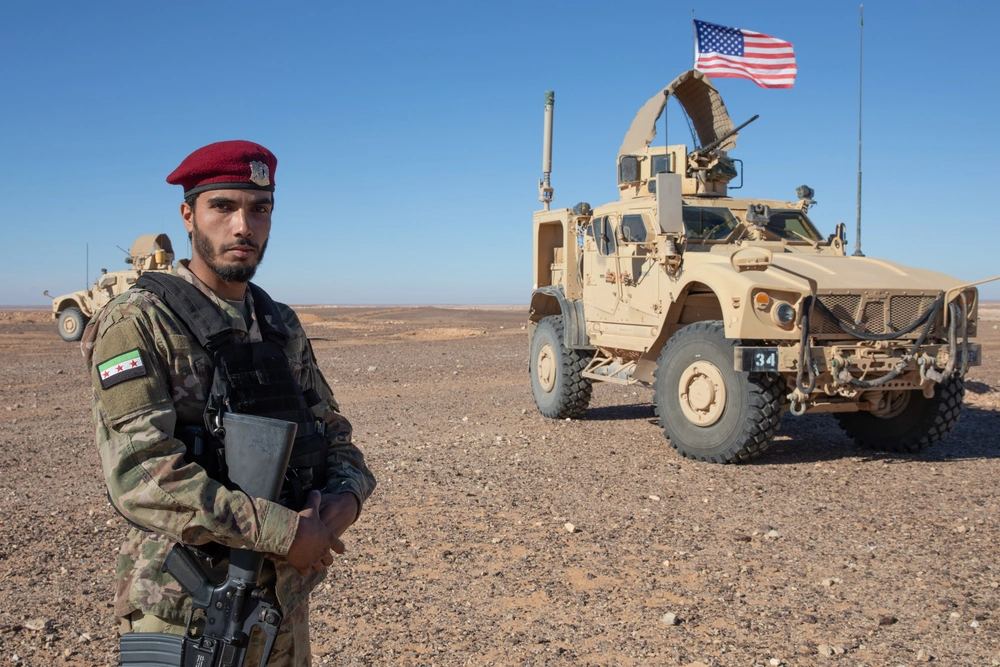
A recent report by the Middle East Institute (MEI) outlines how the transitional government of Syria is actively considering formal accession to the Global Coalition to Defeat ISIS, aligning with the US-led counter-terrorism effort. The report was issued ahead of the October 17 meeting in DC, between US President Donald Trump and Syrian President Ahmad al-Sharaa.
In its analysis, MEI notes that Damascus concluded it can best achieve its political, military and economic aims by formally joining the coalition. Politically, entry would enhance Syria’s international legitimacy and potentially remove it from terrorism-related lists. Militarily and strategically, accession would provide access to US-led technical and operational support and diminish the exclusive role of the Syrian Democratic Forces (SDF) as the coalition’s partner in Syria. Together, these factors underpin the Syrian government’s shift.
Moreover, MEI highlights operational developments: On October 18, a joint operation in the Damascus countryside city of Dumayr between coalition forces and Syrian government troops led to the arrest of senior ISIS figure Ahmad Abdullah al-Masoud al-Badr, marking the fifth coordination of its kind. This uptick in cooperation indicates the tactical groundwork for formal partnership is already being laid.
Historic Context and Shifting Dynamics
The coalition was founded in September 2014, at which point Syria’s Assad-era regime was excluded from the decision-making framework and viewed the coalition as a breach of sovereignty. Meanwhile, the coalition partnered primarily with the PKK-aligned SDF, which helped combat the so-called ISIS “caliphate” in March 2019.
However, the December 2024 fall of the Assad regime and establishment of the Sharaa-led transitional government changed the calculation. Damascus now portrays the coalition not as foreign interference but as a potential partner in rebuilding institutions and counter-terror efforts. MEI describes this shift as a transition from “hostile coexistence” to prospective institutional partnership.
Obstacles to Official Inclusion
Despite this momentum, MEI identifies significant hurdles. Institutionally, Syria’s Ministry of Defense remains in a nascent stage, with a bourgeoning background vetting process for recruits and limited capability, possibly undermining confidence in Damascus’s ability to conduct joint operations. Coordination to date has rested largely with the Ministry of Interior rather than Defense, complicating integration into the coalition’s framework.
Another major impediment is the unresolved status of the SDF. US officials believe Syria cannot be admitted before the SDF is fully integrated into Syrian state institutions. The SDF’s commander, Mazloum Abdi, recently claimed that its integration may happen “soon.”
Possibilities and Implications
MEI lays out four pathways. The most likely: Syria formally joins the coalition, deepening coordination, enhancing legitimacy, improved intelligence sharing and supporting reconstruction. A second option: continued coordination without formal membership. While operational cooperation remains, the absence of formal accreditation could limit efficiency and reconstruction payoff.
A third scenario sees coordination collapse entirely, leaving both Syria and the coalition vulnerable and allowing ISIS to exploit governance vacuums. A fourth involves unilateral action: each side operating separately, an arrangement often less effective than integrated efforts.
If Syria joins the strategic landscape in the region would significantly shift. A unified front could accelerate dismantling ISIS networks, reduce redundancies and bolster Syria’s international standing, paving the way for reconstruction and state consolidation. However, sovereignty sensitivities and internal resistance in Syria, combined with possibility of Western apprehensiveness, mean the formal integration will demand concrete reforms all parties.
On the Eve of a Historic Meeting
News of this merger comes on the eve of an October 17 Washington meeting between Trump and Sharaa. MEI positions the meeting as a pivotal moment: Will the US ease sanctions to reward Syrian accession? Will Damascus demonstrate institutional reform to earn the coalition’s trust? Without serious first moves from either side, posits MEI, the risk is a slide into scenario two, coordination without accession, which could prolong instability and hamper global efforts to contain ISIS.
As tactical cooperation builds, the crux of success now lies in translating it into a durable strategic partnership. For Syria, that means reform. For the coalition, it means balancing operational needs with respect for sovereignty and addressing the SDF question. The outcome will shape not just Syria’s future but the regional fight against one of the most persistent threats of the past decade.








